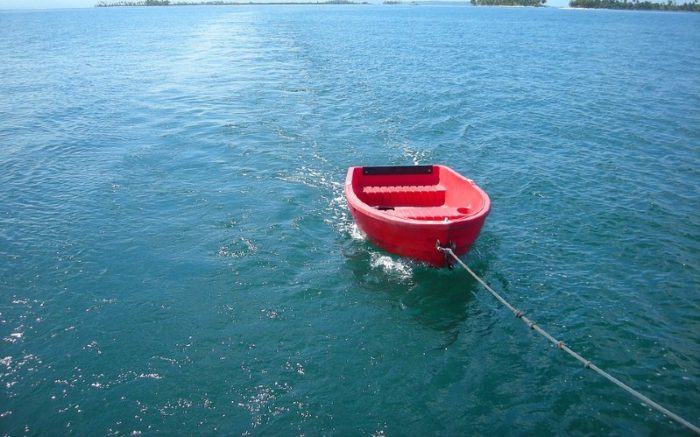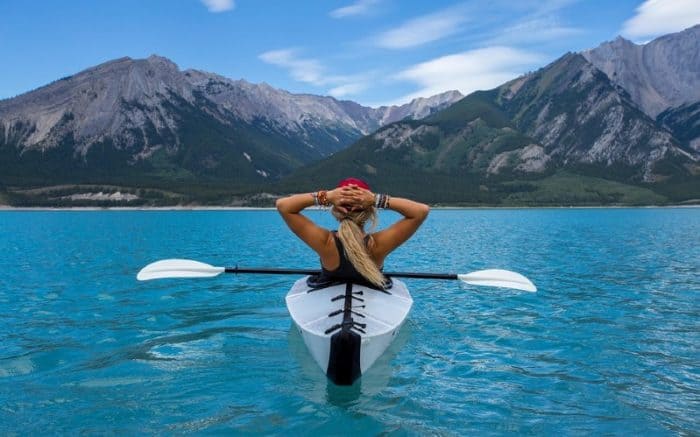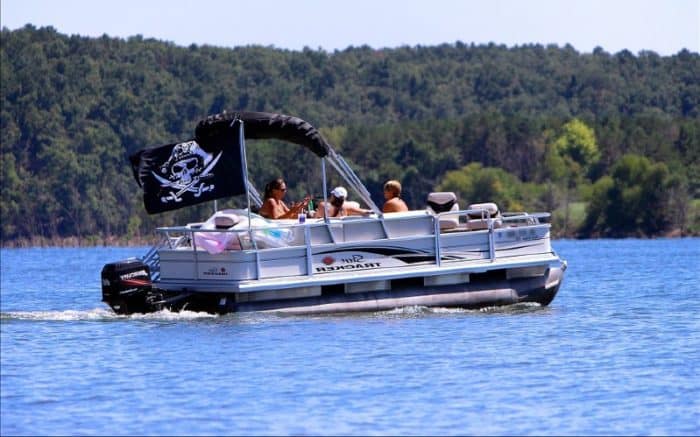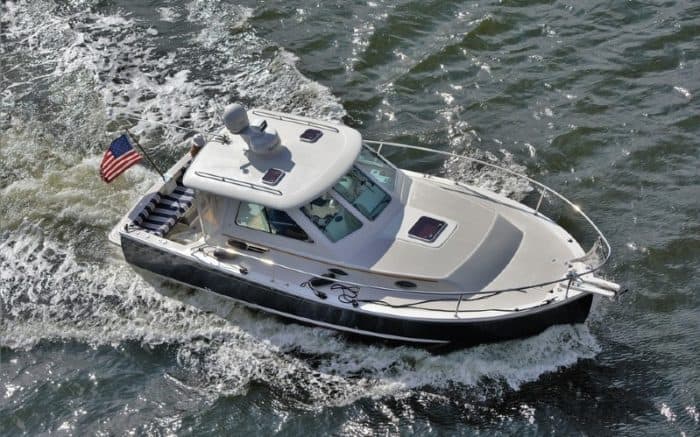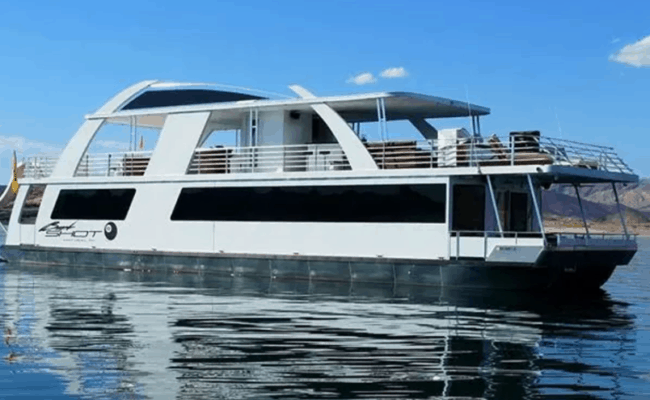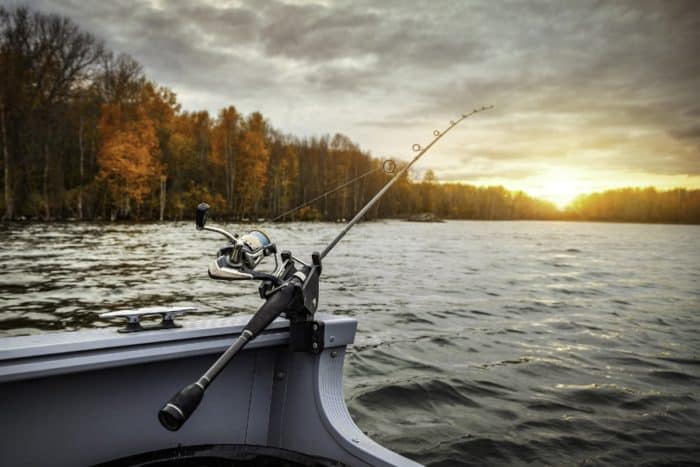What are the Different Classes of Boats?
Classes of boats and types of boats are two different things. Every type of boat fits into one of four classes of boats. While a type of boat can vary significantly in appearance and function, class is easy to understand. Boat classes are all determined by the overall length of the vessel.
The class of a boat is significant for you as a boat owner. Boats classes are required to meet certain safety guidelines based on those classes. The size of your boat determines what you need to keep on board. Let’s take a look at the different classes of boats. We’ll also get into different types of boats and see where they fit in terms of class.
Class A Boats
Any boat that clocks in at under 16 feet in length. That means it could be:
- a fishing boat
- a canoe
- a dinghy
- A personal watercraft
- An inflatable boat
Recreational boats that are less than 16 feet in length are not required to carry any day signals on board. That said, there are safety requirements. These are regulated by the US Coast Guard. It’s also worth noting that these regulations are slightly different for canoes and kayaks.
Canoes/Kayaks Under 16 Feet
For these vessels, a Type I, II, III or V personal flotation device must be available for every person on board. These need to be US Coast Guard approved flotation devices. They need to be the right size and wearable by the person who plans to wear them as well. If the person is not wearing it, it needs to be someplace they can reach it easily. We recommend anyone on a boat of this size keep their flotation device on at all times. The minimum requirement is that one be available and easy to reach. In an emergency, you can save yourself precious time by having it on already. This is especially true for children on boats.
Visual distress signals are required on the vessel if it’s being operated at night. Your night signal has to be made within the last 42 months as well.
Sound devices are required as well. A whistle is recommended but a horn will work also.
Other Boats Under 16 Feet
All boats under 16 feet require the same personal flotation devices. The rules for a kayak or canoe apply here as well. One for everyone on board that is accessible and wearable. A distress signal is also required for these boats. Sound signals are the same as for kayaks and canoes as well.
There are additional requirements for these kinds of boats if they meet certain conditions.
A B-1 fire extinguisher of any type must be on board any vessel under 16 feet besides a canoe or kayak. That is, if it has an enclosed engine, enclosed living space, or a permanent fuel tank.
A type I, II, or III Marine Sanitation device is required if the vessel has an installed toilet.
A backfire flame arrestor is required if the vessel has a gasoline-powered engine. The exception is if it is an outboard motor.
Enclosed engines must also have ventilation that meets Coast Guard standards.
Class I Boats
Boats that are between 16 feet and 26 feet fall under this classification. Any number of boats could fall into this class.
- Smaller deck boats
- Cuddy cabin boats
- Pontoon boats
- Surf boat
- Jet boats
- Aluminum fishing boats
- Wakeboard boats
- Ski boats
All Class I boats must have one personal flotation device of Type I, I, III or V per person on board. In addition, one throwable Type IV device is required to be on board. Often people overlook these on tow sports boats. They will only think of the person looking for a thrilling ride water skiing as the one who needs a PFD. The Coast Guard requires them for everyone, however.
A B-1 fire extinguisher of any type is also required to be on board. This is true, again, if the engine is enclosed. It’s not required for outboard motor boats. However, as before, if there is an enclosed living space or permanent fuel tank, then you do need a fire extinguisher.
This size of boat requires specific distress signals. You need a minimum of three day use and night use flares. You can also have a non-flare substitute for day use in the form of an orange distress flag. A Non-pyrotechnic substitute for night use is an electric SOS light. Flares must have been made within the last 42 months.
A horn or whistle is needed as a sound signal.
A type I, II, or III Marine Sanitation device is required if the vessel has an installed toilet.
A backfire flame arrestor is required if the vessel has a gasoline-powered engine. The exception is if it is an outboard motor.
Enclosed engines must also have ventilation that meets Coast Guard standards.
Class II Boats
Class II boats are any vessel that span 26 feet to 40 feet. This can include
- Cabin cruisers
- Bowrider boats
- Trawler boats
- Sail boats
- Runabout boats
These boats meet the same requirements for PFDs as Class I boats. That means every single passenger on board needs to have access to their own life jacket or other PFD. The acceptable types are Type I, II, III and V. And again a throwable Type IV is also required. These recreational boats can easily hold over one dozen people. Even if you’re freshwater fishing in shallow waters, these requirements must be met.
At this size, either one B-II fire extinguisher or two B-Is are needed. Remember, marine plywood isn’t able to stand up to fire well at all. The extra extinguishers could be a lifesaver at this size of a boat. Nothing ruins some relaxed cruising faster than a boat fire.
Visual distress signals on this kind of boat are the same as those for Class I boats. That means three day use and three night use. Three combination day and night use signals are also acceptable. These are essential for any overnight trips on the boat. Even high performance boats can run into troubles in the dark. Make sure any signal flares have been manufactured within the last 42 months.
Sound devices must be present as with lower boat classes.
A type I, II, or III Marine Sanitation device is required if the vessel has an installed toilet.
A backfire flame arrestor is required if the vessel has a gasoline-powered engine. The exception is if it is an outboard motor.
Enclosed engines must also have ventilation that meets Coast Guard standards
This class of boat is also required to have pollution regulation placards. Your boat will need a 5″ x 8″ Oil Discharge placard and 4″ x 9″ Waste Discharge placard.
Class III Boats
These boats range from 40 feet to no more than 65 feet in length. This can include
- Cigarette boats
- Yachts
- Sport fishers
- Catamarans
- Sail boats
These are the largest class of boat available to typical boat owners. For these, the same flotation device standards apply as they did for Class II. That means one PFD of Class I, II, III or V is required for every passenger on board. Since different types of boats can carry passengers in greater numbers, this needs to be respected. Make sure every single person knows where the PFD is and how to wear it. Each person must have one that fits properly.
In terms of fire extinguishers, the rules change again with Class III boats. You will need one B-II extinguisher and one B-I extinguisher on board. Alternatively, you could have three B-I extinguishers handy.
Visual distress signals and sound signals are the same as the requirements for smaller class boats. That means three day use and three night use signals. An orange signal flag may substitute one of the day use flares, and an electric SOS light can substitute for one of the night use. A horn or whistle is also required.
A type I, II, or III Marine Sanitation device is required if the vessel has an installed toilet.
A backfire flame arrestor is required if the vessel has a gasoline-powered engine. The exception is if it is an outboard motor.
Enclosed engines must also have ventilation that meets Coast Guard standards
This class of boat is also required to have pollution regulation placards. Your boat will need a 5″ x 8″ Oil Discharge placard and 4″ x 9″ Waste Discharge placard. If the vessel has a galley then it must also have a waste management plan.
At this length, the boat must also have the Inland Navigation Rules on board. This is the “Rules of the Road” that govern boating.
Boats Over 65 Feet
Some yachts and things like a ferry boat can easily be over 65 feet. These no longer qualify as subject to small boat regulations. Typically no one is going to own a personal watercraft of this size. The Coast Guard does have regulations in place if you are on a large vessel such as this, however. These apply to vessels from 65 feet up to 165 feet. After that, vessels are typically considered research, commercial, or military.
The rules regarding flotation devices remain static here. One Type I, II, III or V PFD for every passenger on board. In addition, one Type IV throwable device. It’s worth noting there that the “Type” system will not be around forever. The Newton system is slowly being phased on. Newtons measure pounds of force and help indicate how much a PFD can keep afloat. This buoyancy rating in Newtons has been in place since 2019. The transfer is going slowly to allow people time to adjust. Most PFDs you purchase now will explain buoyancy in Newtons.
For instance, a Type II flotation device is equivalent to a current PFD that is rated for 70 Newtons. This device should be able to keep most people floating face up in the water. Type III devices will be replaced with 70 Newton rated PFDs that do not turn you face up. Each device has a Newton rating plus icons. These explain how much weight the PFD is meant to keep you afloat and how it floats you. In several years time, all PFDs will follow these guidelines. That said, old PFDs are still perfectly legal and usable.
For fire extinguishers, weight becomes a factor at this size. Vessels that weigh up to 50 gross tons need one B-II extinguisher. Over 50 gross tons requires two B-II extinguishers on board.
Visual and sound signals are the same for the previous class of vessels. This class does have a variation in sanitation requirements, however. A Type II or Type III marine sanitation device is required for this size of a vessel.
Additional requirements are the same as for the previous class. This includes sanitation and ventilation. The backfire flame arrestor must meet the same requirements as well. A copy of the inland navigation rules must also be on board the boat at all times, also.
What Class are Fishing Boats?
There are dozens and dozens of kinds of boats in the world. You have banana boats, log boats, bass boats and so many more. That’s why the class system is broken down by length. It makes it much easier to categorize a boat in these simple terms rather than trying to manage each type individually.
As a result, something like a fishing boat does not necessarily fit into one class. Your fishing boat could easily fit into literally any one of these classes. Remember, a fishing boat is not even technically a specific kind of boat. A fishing boat is just a boat from which you go fishing. A pontoon boat or some high performance boat could be a fishing boat. An inflatable dinghy could be a fishing boat. There is no standard for that particular description of a boat.
Does a Fishing Boat Need All The Same Safety Gear?
Some people question the application of safety standards. A Class I boat that only has one person on board seems different than one with ten people on board. But the rules are adaptable. If you are the only passenger on the boat then you only need one flotation device. You only need the fire extinguisher if your boat meets the requirements for it. That means something other than an outboard motor.
Man powered boats do not require the same level of safety and concern that power boats do. That’s why canoes and kayaks are exempt from requiring a fire extinguisher. After all, what would be the point? But just because your boat doesn’t have a swim platform or whatever doesn’t matter. Smaller boats or bigger boats all have the same potential to get into trouble. These rules are meant to help prevent that as much as possible.
What About Pontoon Boats and Deck Boats?
No matter what kind of boat you’re on, the Coast Guard requirements apply evenly. Again, this can sometimes seem unnecessary. Something like a ski boat may seem more dangerous than cruising around on a deck boat. If you’re just relaxing on inland waters trying to catch largemouth bass, it can seem like overkill. But these measures are designed to ensure safety. In fact, these are the minimum requirements that the Coast Guard has implemented.
Some boaters prefer to have additional measures in place. For instance, as we said above, we recommend wearing a PFD at all times. This is not specifically required, only that the PFD be wearable and accessible. We feel that, the more people on board a boat, the more important it is to make sure everyone is wearing a PFD. This can cut down on wasted time and confusion if an accident happens later. If everyone scrambles for a PFD at the same time, a bad situation could easily become worse.
The Bottom Line
Boat classification has no effect on how you enjoy your boat. It also doesn’t change what you are allowed to do on your boat. The only purpose of classifications is to account for safety on board. Larger boats need to take more care in keeping the boat and passengers safe. Understanding the requirement is key to ensuring the safety of everyone on the water. Make sure you know the full dimensions of any boat you plan to take out onto the water. Once you are aware, you should always do a pre-departure check of the boat.
It’s important to know if you have all the safety gear every time you head out. Make sure the personal flotation devices are all in good working order. Check the date on all flares or visual signals to make sure they meet requirements. Also, check the date on your fire extinguishers before heading out as well. Old gear should be replaced immediately. It’s better to have it and not need it than to need it and not have it.
Keep yourself and your passengers safe and you’ll be having a great time on the water.
Categories: Boats
